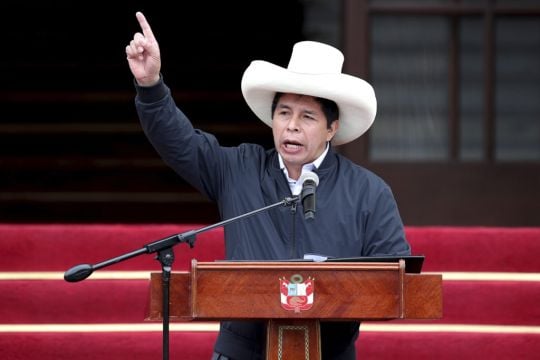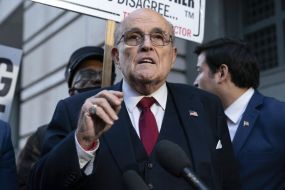There has been further turmoil in Peru’s government as president Pedro Castillo announced plans for a fourth cabinet shake-up in six months – just three days after a previous overhaul of his ministerial team.
The latest change was quickly followed by revelations that his newest prime minister once faced domestic violence allegations.
The president’s struggles this week have only added to earlier doubts raised about the political neophyte’s ability to lead a nation.
Mr Castillo, a rural school teacher in a poor Andean district, was an underdog when he entered the race for the presidency last year and initially campaigned on promises to nationalise Peru’s crucial mining industry and rewrite the constitution to end the historical discrimination against Indigenous people and vulnerable populations.

He softened his rhetoric when he advanced to a run-off, and shocked many observers when he won.
Critics immediately warned about his almost complete lack of political experience. Just months into the job, which he assumed in July as Peru began to emerge from the pandemic, some of his decisions have validated the criticism.
But they have also highlighted Peru’s long-dysfunctional political system in which no party holds a majority and it is difficult to push through new legislative programmes or make changes.
On Friday, Mr Castillo gave no specifics about the latest changes planned for the cabinet, but his announcement implied that newly appointed prime minister Hector Valer would be resigning, as Peruvian law requires that post to be vacant before the cabinet can be overhauled.
Speaking at a news conference from the presidential palace, the president said only that he would re-constitute the cabinet and his ministerial team will be characterised by openness to all political forces.

He said he took action after leaders in congress declined to hold a vote of confidence on the cabinet on Tuesday.
Mr Valer has denied he was guilty of domestic abuse, though his now late wife and daughter had both made such allegations against him in 2016. A judge issued a protective order for the wife.
Mr Castillo raised questions on Tuesday when he announced his third cabinet shuffle that saw Mr Valer named prime minister and half of the 18-member cabinet replaced.
Among those changes, a geography teacher and member of the president’s party was appointed minister of the environment as Peru grapples with a big oil spill from a refinery on its Pacific coast.
The changes came after the previous interior minister and prime minister resigned and accused Mr Castillo of not acting swiftly against corruption, an endemic problem in Peru. They also complained that the 52-year-old leader listens to dubious advisers.

“Once in office, inexperience and bad advice do come into play,” said Cynthia Sanborn, political science professor at Peru’s Universidad del Pacifico and a fellow at the Washington-based Woodrow Wilson Centre.
“Not only was Castillo unprepared for national political office, he also did not have a political or social base to count on for support, nor was he able to bring in capable advisers and experts in the various sectors any president needs to govern,” she said.
Every Peruvian president of the past 36 years has been ensnarled in corruption allegations, with some imprisoned. One killed himself before police could arrest him.
Finishing first among 18 presidential hopefuls in April’s election, Mr Castillo advanced to a run-off ballot with less than 20% of the overall vote.
He then defeated a member of the country’s political elite by just 44,000 votes, becoming Peru’s fifth president since 2016. He succeeded Francisco Sagasti, who was appointed by congress in November 2020 as the South American nation cycled through three heads of state in one week.
Peru’s 130-seat, unicameral congress is deeply fragmented among 10 political parties and rarely comes to any consensus on passing legislation.
Mr Castillo’s party is the biggest faction, but it has only 37 seats, and opposition members lead key committees.
The divisions make it highly unlikely that Mr Castillo will find sufficient support for passing yet-to-be defined proposals to implement his promise to create a Peru where there are “no more poor in a rich country”.
However, analysts say that factionalism might just help keep Mr Castillo in office.







